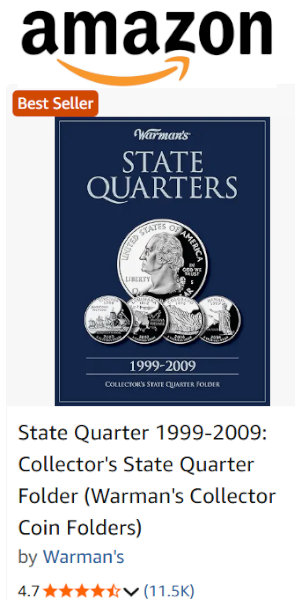The allure of coin collecting lies not only in the beauty and history each piece carries but also in the exciting possibility that, amongst one's holdings, there might be a coin of exceptional value. The United States has a rich numismatic history, with the U.S. Mint producing coinage since 1794. Over the centuries, certain coins have become rarities, fetching breathtaking prices when they come to auction.
The allure of coin collecting lies not only in the beauty and history each piece carries but also in the exciting possibility that, amongst one's holdings, there might be a coin of exceptional value. The United States has a rich numismatic history, with the U.S. Mint producing coinage since 1794. Over the centuries, certain coins have become rarities, fetching breathtaking prices when they come to auction.
The value of a coin is often a result of its rarity—how many pieces were produced and how many have survived the passage of time. Supply and demand are essential considerations; the fewer the coins and the higher the demand, the more valuable a coin may be.
For those intrigued by the prospect of finding treasure in their pocket change or an old collection, understanding what makes a coin valuable is crucial. Rarity, yes, but also historical significance, and the condition or grade of the coin all factor into the equation. Whether you're a seasoned numismatist or a newcomer to the hobby, this guide is designed to equip you with knowledge and perhaps spark the joy of discovering a rare gem in your collection.
Understanding Value and Rarity
To illustrate the complex interplay between rarity, value, and demand, let’s consider a few examples from the lexicon of U.S. coinage:
The 1799 Draped Bust Silver Dollar: With over 423,000 originally minted, one might think this coin would not be extremely rare. However, it’s estimated that only about 8,000 of these coins have survived. This scarcity, coupled with a strong collector demand for silver dollars from this era, drives its auction price upward.
The 1840 Liberty Head Quarter Eagle: While this coin had a much lower mintage (less than 19,000), only around 80 are known to exist across all grades. However, record auction prices show that it garners less enthusiasm in the collector community than the Draped Bust Dollar, validating the point that both rarity and demand play significant roles in determining value.
These two examples barely scratch the surface of American coinage's treasures. Within collections, you might find the following coins, each with its own story and worth based on its rarity and the narratives it carries:
- The 1792 Silver Center Cent (Special Strike), a fine example of experimental currency design from the U.S. Mint's early days, has fetched up to $2,520,000 at auction.
These historical coins offer more than monetary value; they provide a tangible connection to the past, a glimpse into the evolving artistry of coin design, and the evolving needs of commerce and trade in a young nation.
Categories of Collectible Coins
A numismatist's collection might be varied and expansive, from cents to silver dollars, each category offering its own rarities:
Cents
While the ordinary cent might not seem like a goldmine, certain key dates and rare mintages can be quite lucrative. For instance, the 1943-D Bronze Lincoln Wheat Cent holds immense value due to its composition anomaly—1943 cents were meant to be struck with steel due to wartime metal rationing. This bronze outlier has reached auction prices as high as $840,000.
Nickels, Dimes, and Quarters
From Liberty Head Nickels to Barber Quarters, these smaller denominations hide plenty of treasures. The famed 1913 Liberty Head Nickel, a coin surrounded by mystery and possibly the result of a clandestine minting, once commanded a price of $4,560,000 for a single specimen.
Half Dollars and Dollars
Half dollar rarities include the 1838-O Capped Bust Half Dollar, a piece marked by its scarcity, and silver dollars boast the iconic 1804 Draped Bust Silver Dollar, struck not in 1804 but rather as part of diplomatic gifts in the 1830s, making it exceedingly rare and valuable.
Error Coins and Key Dates
Beyond these celebrated rarities, the world of error coins—a quirk of the minting process—produces some intriguing and valuable pieces. Consider the 1955 Doubled Die Penny, with its double-struck obverse creating an alluring error that can command substantial sums. Also, coins from particular U.S. Mint branches with low mintages, termed "key date" coins, are essential for serious collectors, such as the 1909-S VDB Lincoln Cent or the 1937-D "Three-Legged" Buffalo Nickel.
The Thrill of the Hunt
While the likelihood of stumbling upon a coin valued in the millions is small, the chance of finding a piece worth hundreds or even thousands is much more realistic. Key date coins, errors, or simple rarities might be nestled within pocket change, inheritances, or an old jar on a shelf. Coin collecting is an adventure, one that combines history, artistry, and the thrill of discovery.
Final Thoughts
Whether you're aiming to build a financially valuable collection or just appreciate the richness of history in your hands, knowledge is your greatest tool. The coins featured here represent just a fraction of the treasures awaiting those with a keen eye and a passion for numismatics.
For those new to the field or seasoned enthusiasts, the pursuit of rare coins is an ongoing journey. It requires research, dedication, and sometimes a touch of good fortune. Keep learning, keep exploring, and who knows? The next extraordinary coin could be just within reach.
In conclusion, it’s not just about the monetary worth—coin collecting is about the love of history, the art of storytelling that comes with each piece, and the joy of a hobby that continues to thrive. So, take this knowledge, and let it guide your collecting journey. Perhaps, it’ll lead you to your own version of buried treasure.
Information for this article was gathered from the following source.


